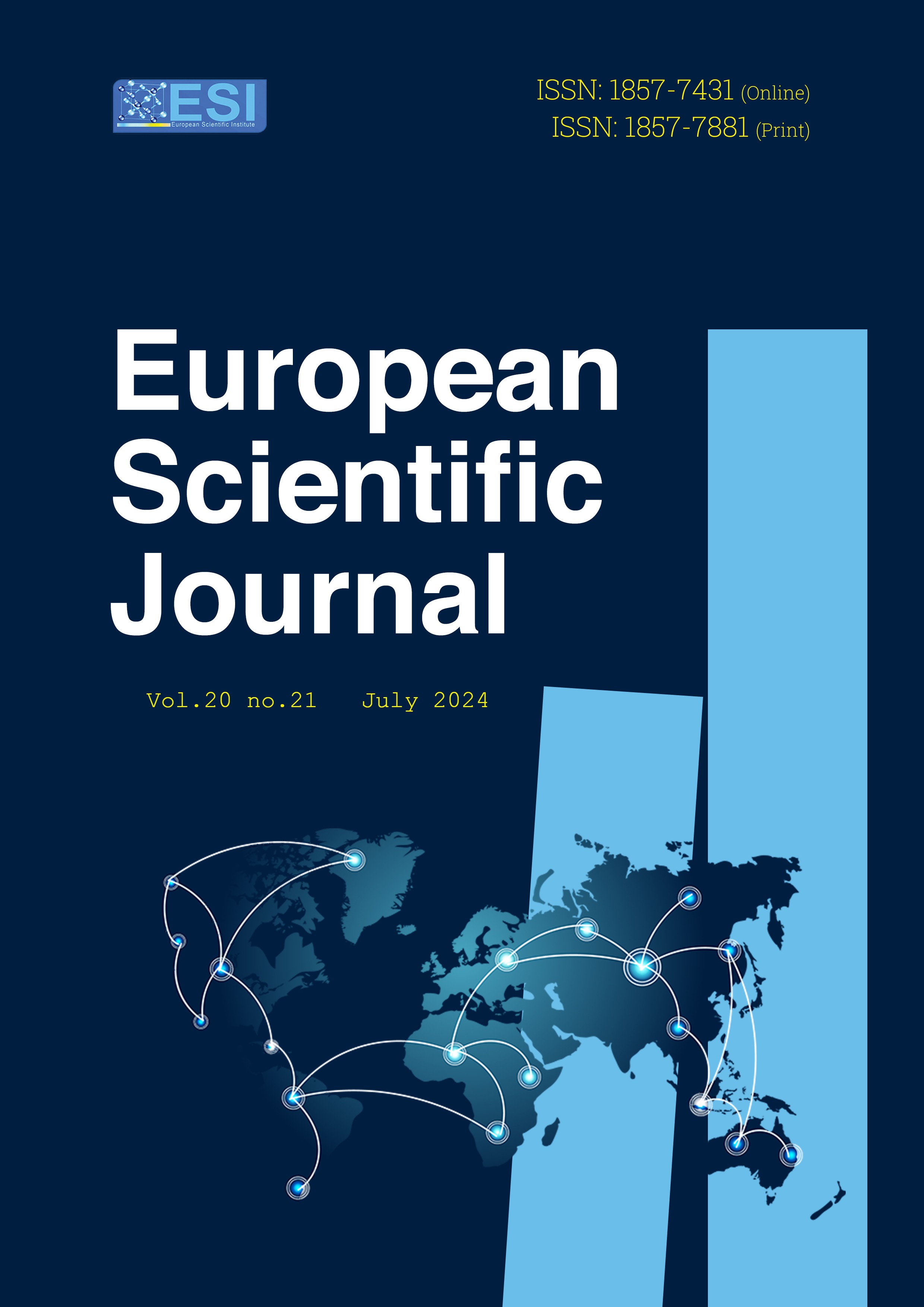Performance Optimization of a Simple Drip Irrigation System with Used Plastic Water Bottles
Abstract
Effects of perforation sizes and heights of used plastic water bottles on growth and yield components of amaranthus spinosus L. crop were analyzed in this study. The experiment was conducted on a 38 m2 experimental field of Tamale Technical University using a Randomized Complete Block Design with four treatments and replications. Perforation sizes at different heights of bottles from the ground level combinations were: 3.2 mm, 5 cm (A); 3.2 mm, 10 cm (B); 3.2 mm, 15 cm (C); 3.2 mm, 20 cm (D), respectively. Data on growth and yield components of amaranthus crop were measured and analysed using ANOVA. Results showed a decreasing trend for both irrigation time and perforation size and height of the plastic bottle from the ground level. Significant differences were observed between the treatments A and D, B and C, B and D, and C and D for leaf area, number of leaves, plant height, stem girth, root length, and weight of amaranthus crop head. However, perforation size of 3.2 mm with the plastic water bottle raised at a height of 5 cm from the ground resulted in significant growth and yield of amaranthus crop, followed by B, C and D treatments. Small holder farmers can adopt used water plastic bottles with perforation size of 3.2 mm raised 5 cm from the ground level in order to boost the production of amaranthus crop.
Downloads
Metrics
PlumX Statistics
References
2. FAO Food and Agriculture Organization of the United Nations (2018). Global crop water Model Environmental Research letters, 8 (2): 302-309.
3. Foley J. A., Ramankutty N, Bruinman K.A, Cassidy E.S. (2011). Increasing population and consumption are placing unprecedented demands on agriculture and natural resources. Nature.com. University of California, California.
4. Forbes, J.C and Watso, R.D. (1992). Plants in Agriculture 1st Edn. Irrigation practices in high rainfall area. Press syndicate of the University of Cambridge, Cambridge, New York. No. 04-90-St. Joseph. Mich: ASAE Pub. 355.
5. Fróna D, Szenderá J, Harangi-Rákos M. (2019). The challenge of feeding the world. Sustainability, 11(20), 5816.
6. Karam, K. F. Karam N, Tarabey (2002) Paticipatory water saving management and water cultural heritage: Lebanon country report. Lebanese Agricultural research Institute, Irrigation and Agro-Meterology Department, Zahleh, Lebannon.
7. Karata, A. (1995). An Investigation on Determination of Suitable Plant Growth, Yield, Sowing Date, and Some Quality Characteristics of lettuce. Azizona, USA.
8. Kelly, A and Keller (1995). Effective Efficiency: A water use concept of allocating freshwater resources. Water resources and irrigation division Discussion paper 22. Arington, Virginia winrock International, USA.
9. Kirnak H, Demir S, Tas I, Cakmakli M. (2002). Response of different irrigation water applications on yield and growth of lettuce grown in greenhouse. J Agric Fac Harran Uni, 6 (1-2): 4754.
10. Mehta P, Siebert S, Kummu M. (2024). Half of twenty-first century global irrigation expansion has been in water-stressed regions. Nat Water 2, 254–261.
11. Ministry of Food and Agriculture (2020). Ghana agricultural survey fpr minor season. Accra, Ghana
12. Ministry of Food and Agriculture-MoFA (2022). Transforming Ghana beyond aid. Annual report, Accra, Ghana.
13. Neumann K. Stehfest E, Verburg P, Siebert H, Muller S, Veldkamp. T. Exploring global irrigation patterns: A multi levels modelling approach, Agriclt. Syst., 104, 703-713.
14. Ngiah-Sah Kah K. (2021). Effects of vareity, deficit drip irrigation and rice straw mulch on flowering, fruiting and yield of tomato (Lycopersicon esculentum l.). Master’s Thesis, University for Development Studies, WACWISA, Tamale, Ghana.
15. Norain, J, Festo, J, Massawe, R, Symonds, C. (2019). Transpiration efficiency of Amaranth (Amaranthus sp.) in response to drought stress, The Journal of Horticultural Science and Biotechnology, 94(4): 448-459,
16. Siebert. S, Doll P (2010). Quantifying blue and green virtual water contents in global crop production as well as potential production losses without irrigation. J. Hydrot., 384, 198-217.
17. Steven, L. Peter, M.S. Ayyangowdar, B.Maheshwara Bahu, Y. Pampanna, B.S. Polisgowdar and G. Ramesh (2019). Evaluation of drip irrigation on amaranthus (Amarathus hybridus L) yield and water use efficiency under shade-Net. Department of soil and water Engineering, College of Agricultural Engineering, Raichur University of Agricultural Science, Raichur- 584 104, India.
18. Wang J, Vanga SK, Saxena R, Orsat V, Raghavan V. Effect of Climate Change on the Yield of Cereal Crops: A Review. Climate, 6, 41.
19. Yazgan S, Ayas S, Demirtas C, Buyukcangaz H, Candogan, B.N. (2008). Deficit irrigation effects on lettuce (Lactuca sativa var. Olenka) yield in unheated greenhouse condition. J. Food Agric Environ. 6(2): 357-361.
20. Zakaria H, Abujaja AM, Adam H, Nabila AY (2014). Factors affecting farmers willingness to pay for improved irrigation service : A case study of Bontanga Irrigation Scheme in northern Ghana. International Journal of Agricultural Economics and Extension, 2(1), 68–76.
Copyright (c) 2024 Zakaria Issaka, Abdul-Latif Husein Alhassan

This work is licensed under a Creative Commons Attribution 4.0 International License.








